New products at Crocus
by Sarah - June 26th, 2010.Filed under: Crocus, New Products.
New items at Crocus
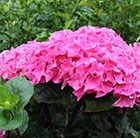
hydrangea £19.99
Position: partial shadeSoil: moist, well-drained, moderately fertile, humus-rich soilRate of growth: fast-growing Flowering period: June to October Flower colour: rich pinkHardiness: fully hardyA recently introduced cultivar that produces the much-loved flower clusters throughout summer and autumn, but these are carried on lustrous, near-black stems. This gives the plant a unique and attractive twist. The deep pink flowers of ‘Zambia’ appear a lime green colour when they are first emerging, and both the young and more mature flowers contrast really well with its steely coloured stems. A very welcome addition to the family.Garden care: Leave the old flower heads in place through the winter. As the new shoots start to emerge in spring cut back a third to a quarter of the previous seasons flowering stems to the base and cut back the remaining flower heads to the first pair of buds.
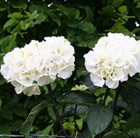
hydrangea £19.99
Position: partial shadeSoil: moist, well-drained, moderately fertile, humus-rich soilRate of growth: fast-growing Flowering period: June to October Flower colour: whiteHardiness: fully hardyThe glowing white flowerheads and lush green foliage provide a brilliant contrast to the near-black stems. This new hydrangea is perfect for adding a burst of colour to a partially shaded bed and will also make a fine, informal, flowering hedge. Their long flowering period throughout summer and autumn and their tough and undemanding nature, means that these wonderful deciduous shrubs should be top of most gardeners wishlists.Garden care: Leave the old flower heads in place through the winter. As the new shoots start to emerge in spring cut back a third to a quarter of the previous seasons flowering stems to the base and cut back the remaining flower heads to the first pair of buds.
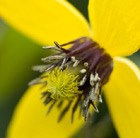
clematis (group 3) £9.99
Position: full sun or partial shadeSoil: fertile, well-drained, neutral soilRate of growth: averageFlowering period: June to SeptemberFlower colour: yellowOther features: silky seedheadsHardiness: fully hardyNodding, yellow flowers with deep purple anthers, look like open lanterns when they appear over a long period from mid summer to autumn. They are then followed by attractive, silky seedheads which will last well into winter. A hardy and disease resistant Clematis, which will be happy in a large container.Garden care: Cut back the stems to the base of the plant each winter and apply a mulch of well-rotted garden compost around the plant, avoiding the immediate crown
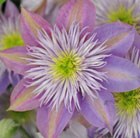
clematis (group 2) £9.99
Position: full sun or partial shadeSoil: fertile, well-drained soil, neutral soilRate of growth: averageFlowering period: May to June and occasionally again in August and SeptemberFlower colour: lavender flowersOther features: ideal for containersHardiness: fully hardyA dazzling variety with large, double, lavender flowers up to 15cm across, with pronounced ruff of stamens and mid-green leaves. A compact and free-flowering climber that is perfect for the small garden as it only grows to 1.8m tall and wide. It can also be grown in a large container up an obelisk or against a sunny wall.Garden care: Remove dead and damaged stems before growth begins in early spring, cutting all remaining stems back to where strong buds are visible. Apply a slow-release balanced fertiliser and a mulch of of well-rotted garden compost around the base of the plant in early spring.
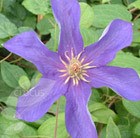
clematis (group 3) £9.99
Position: full sun or partial shadeSoil: fertile, well-drained soil, neutral soilRate of growth: fast-growingFlowering period: July to SeptemberFlower colour: blueOther features: free floweringHardiness: fully hardyLarge, lavender-blue, flowers with brown centres from July to September and mid-green leaves. This vigorous, late-flowering clematis associates particularly well with climbing roses in contrasting colours, such as the yellow ‘Golden Showers’. It thrives in full sun or partial shade.Garden care: In early spring cut back the previous year’s stems to a pair of strong buds about 15-20cm (6-8in) above ground-level and apply a slow-release balanced fertiliser and a mulch of well-rotted garden compost around the plant, avoiding the immediate crown.
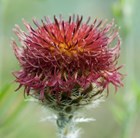
knapweed £6.99
Position: full sunSoil: well-drained, preferably poor soilRate of growth: fast-growingFlowering period: June to OctoberFlower colour: bronze with a yellow to orange tuft on topOther features: the flowers are loved by butterflies and beesHardiness: fully hardyEasy to grow and ideal for naturalised planting schemes, this delightful knapweed will act as a magnet to nearby wildlife. The flowers appear for a really long period from early summer, and if you leave them on the plant once they have faded, they will form beautiful seedheads. These will open like silver stars to release their seeds (a treat for the birds) and then go on to add structural interest to the winter garden. Garden care: Stake with bamboo canes or brushwood before the flowers appear. Deadhead regularly to prolong flowering. In autumn resist the temptation to remove the faded flowerheads as the subsequent seedheads are really attractive in winter. Lift and divide large clumps every three years in spring.
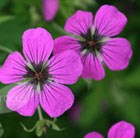
Armenian cranesbill £6.99
Position: full sun or partial shadeSoil: fertile, well-drainedRate of growth: fast growingFlowering period: June to AugustFlowers: magentaHardiness: fully hardyThis vigorous Armenian cranesbill produces a mass of shallow cup-shaped, vivid magenta flowers with black centres and veins from early to late summer. It quickly forms loose hummocks of deeply cut, mid-green leaves, which turn a fabulous shade of red in autumn. An excellent plant for the middle of the border.Garden care: In midsummer rejuvenate plants that are beginning to look jaded, by removing old flowered stems and leaves. Lift and divide large colonies in spring.
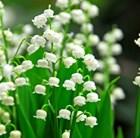
lily-of-the-valley £4.99
Position: partial or full shadeSoil: leafy, fertile, humus-rich, moist soilRate of growth: fast-growing Flowering period: MayHardiness: fully hardyEver popular, lily-of-the-valley is an excellent groundcover plant for moist, humus-rich areas of the garden, quickly spreading to form a fragrant carpet of pure white, bell-shaped flowers and long, dark green leaves. The plant flourishes in sun or partial shade, and the diminutive, bell-like flowers are traditionally an important part of spring wedding bouquets. The seeds may cause a mild stomach upset if ingested.Garden care: Divide and replant congested colonies in September, applying a generous mulch of composted leaf mould around the base of the plant.
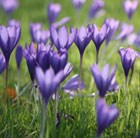
crocus £2.99
Position: full sunSoil: gritty, poor to moderately fertile, well-drained soilRate of growth: fast-growingFlowering period: September to November Flower colour: purple Other features: narrow, mid-green leavesHardiness: fully hardyBulb size: 5cm+ Beautiful goblet shaped Rich violet blue flowers. September to November, followed by narrow, mid-green leaves. This popular autumn-flowering crocus is ideal for naturalising in a sunny shrub border among deciduous shrubs. Often the earliest autumn crocus to bloom, it soon increases to form large colonies.Garden care: Plant bulbs in naturalistic drifts 10cm (4in) deep in July or August in gritty, well-drained soil. Where bulbs are planted in grass do not cut the lawn until after the leaves have died back.
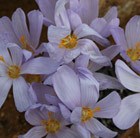
crocus Zonatus – autumn flowering crocus £2.99
Position: full sunSoil: gritty, poor to moderately fertile, well-drained soilRate of growth: averageFlowering period: September to NovemberFlower colour: pale lilacOther features: narrow, green leavesHardiness: fully hardyBeautiful pale lilac, open goblet-shaped blooms with creamy-yellow stamens from September to November, followed by narrow, green leaves. This is a stunning autumn-flowering crocus which is ideal for naturalising in a dry, sunny spot in the garden.Garden care: Plant bulbs in naturalistic drifts 10cm (4in) deep in July or August in gritty, well-drained soil. Where bulbs are planted in grass do not cut the lawn until after the leaves have died back






